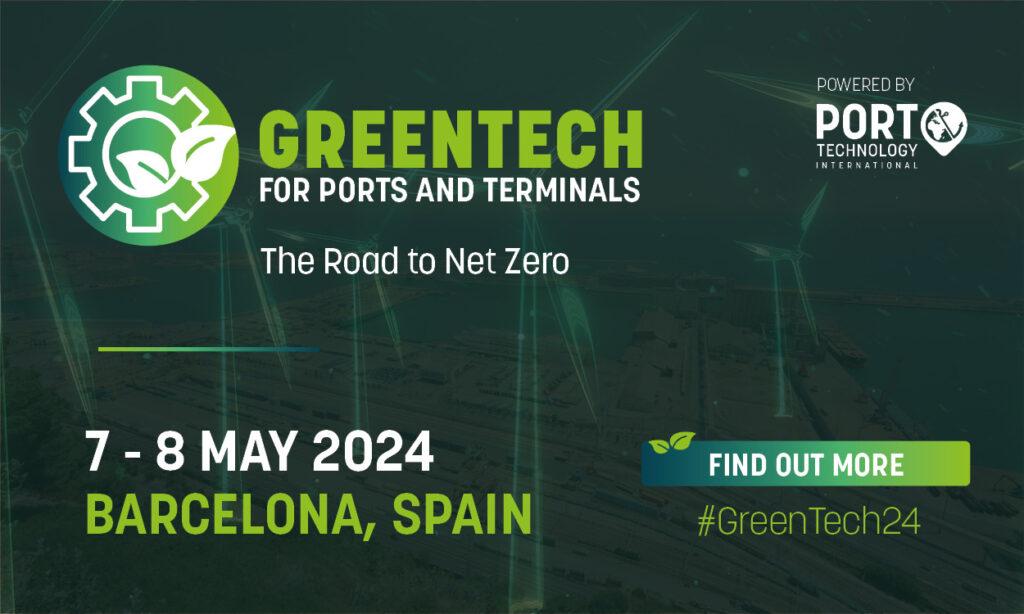On 16 December 2012 the CMA CMG Marco Polo made her first call at the Port of Rotterdam. This box ship with a capacity of over 16,000 twenty-foot equivalent units (TEU) and the coming sister ships are presently the largest container vessels in the world, but in a couple of months the first of the Maersk Triple E vessels will take the lead with a capacity of 18,000 TEU. This increase in the size of container vessels and similar developments in other shipping segments (bulk carriers: Valemax, cruise ships: Oasis of the Seas, liquefied natural gas (LNG) carriers: Qmax vessels) puts pressure on the existing port and terminal infrastructure in their ports of call. In this article we take a closer look at the impact of these ‘whales’ on port operations by considering the latest container ships.
Characteristics of large container vessels
The vessels of the Emma Maersk class (launched in 2006) and the MSC Beatrice class (2009) have called at the large container ports for several years now. The main dimensions of the new Marco Polo class and the Triple E class are not very different from those of the Emma Maersk as the first lines of the table below show. It is interesting to note that the Marco Polo is less wide, but can carry more containers. This is due to the more forward position of the deckhouse, a concept first used for the MSC Beatrice and also applied to the Triple E. Going further down the table below a few interesting differences appear. The displacement of the Triple E is significantly larger while the engine power is 20 percent less.
This is further demonstrated by showing the ratio between installed engine power and displacement: Maersk Triple E has 30 per cent less power per tonne displacement than the other three vessels. This is mainly because the Triple E will be sailing at a lower speed. Because of the lower speed the Triple E has a more full body; hence the larger capacity and displacement. The wind area is also significantly larger, but the ratio bow thrusters/lateral area is almost equal for the Maersk vessels and better than for the other two ships. On the basis of these characteristics one can conclude that the stopping and turning capabilities of these vessels reduces, wh ereas the capability to control the bow will remain intact.
Together with the larger wind areas (22.5 per cent increase of lateral area), this has consequences for the role of the tugs when manoeuvring in ports.
Manoeuvring strategy
In many ports the common practice is that the tugs await the ships just inside the protection of the breakwaters. Once the stern tug is attached, the assisted vessel can be kept under control much easier, but as it takes several minutes to transfer and fix the towline, the tugs are only able to assist the vessel when it is already well within the port. But as the large container vessels are responding slower to the engine, the strategies need to be adapted: tugs must catch the ‘whale’ earlier. For some ports this will mean outside the existing harbour entrance, exposed to waves. Extending breakwaters is a solution for this problem, but preparing tugs, tug crew and pilots to assist in waves may be a more cost-effective alternative. Pilots, tug masters and captains are facing the following issues when receiving these big vessels:
- The tug has to connect and assist in waves;
- Pilots and tug masters have to cope with the slower response of the vessel;
- The big vessels are sensitive to wind. So they’d better be prepared!
Training
It is important that the pilots and the tug masters are well prepared when the large ships call at the port, especially if such anew strategy for the manoeuvre is required. This can be trained in combined simulations involving both the pilot on the container vessel and the master(s) of the tug(s), each of them sailing his ship from a separate simulator. In this way both technical aspects (eg. the time for the tug to respond to the order of the pilot) and the human aspects of the pilot and tug master cooperation (communication) are fully captured. Figure 1 shows some pictures from a recent training where the pilot was commanding an LNG carrier on MARIN’s Full Mission Bridge 1, while two experienced tug masters were sailing the bow and stern tugs on two new Compact Manoeuvring Simulators in a dedicated tug configuration with ASD and winch controls.
When carrying out such simulations, the virtual world must be a good representation of the real world. Though feedback from our clients indicates that – based on some 30 years of experience – we usually get quite close, modelling techniques are continuously further improved making use of the ever-increasing computational power.
To read the full article download PDF



